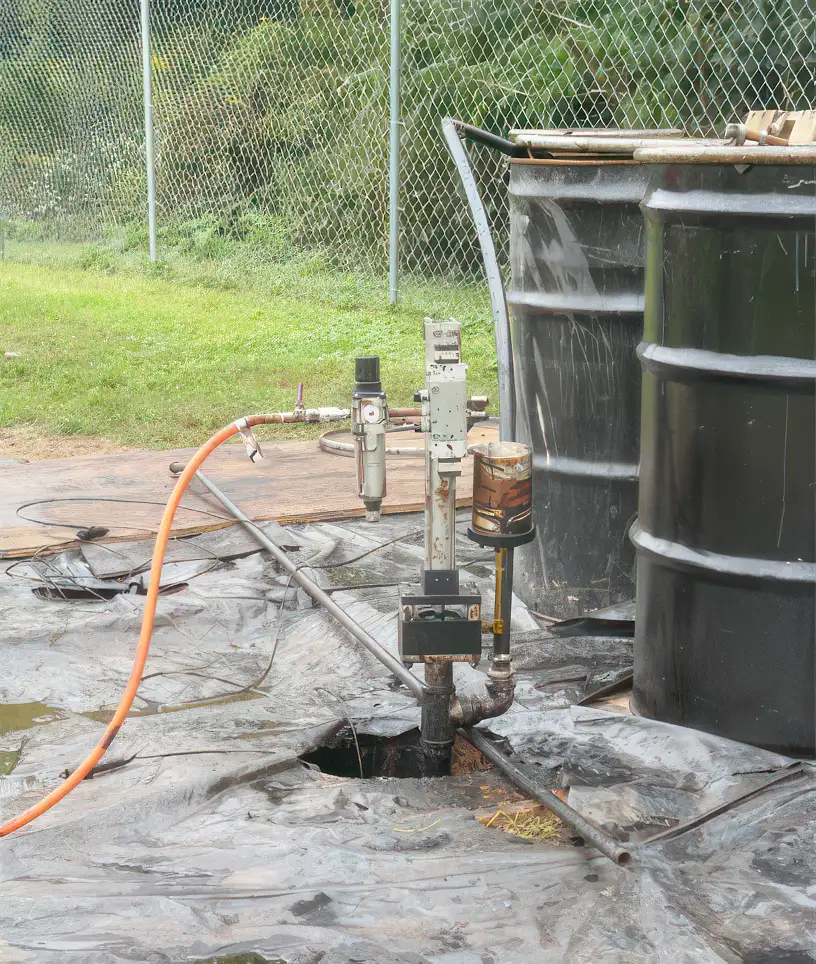But there's good reason behind the serum-slow production. And the engineers say that volume is about to ramp up in a hurry.
The utility company, like virtually all utilities, for decades burned coal to manufacture gas. And like others, the company removed the byproduct coal tar to holding tanks, in this case near a local river. Eventually those tanks began leaking and over time the barely-liquid tar made its way down to bedrock, rode the rock surface slope under the river, then finally pooled in the depression, a natural bowl against a berm.
The flow was slow but relentless, and eventually the weight of the underground pond began forcing the tar into bedrock cracks, posing a threat to deep groundwater. And because of the tar's high viscosity, shallow groundwater contaminated by lighter oil also has collected in the underground pool above the tar.
The simple solution is pumping, but the pumping is not simple – engineers know it's tricky when it's sticky. The site's two-phase recovery goal is to remove both tar and oil but not the groundwater. The tactical challenge is to bring up the products without roiling the formation. Too much water per stroke significantly increases costs and the negative eco impacts of disposal.
The engineers began long, careful, testing using two of Blackhawk's durable, low-flow pneumatic piston pumps with above-surface drivers. Two oil-resistant pressure transducers were installed, one in the upper groundwater and the other in the tar, to measure changes in relative depths during pumping. The underground basin was dewatered at six gallons per minute using an electric submersible. The coal tar, at eight ounces per cycle, was pumped into drums, which were hauled away for disposal.
The multi-month testing, now at its end, has proven the necessity of low-flow pumping in this application and the viability of Blackhawk's low-cost, top-head-drive piston pumps to handle even the most difficult product. All Blackhawk models pump virtually any liquid regardless of toxicity, dynamic pressure or pH value.
Several more low-flow pumps will be installed soon at the four-acre site soon to speed up recovery volume. The Blackhawk pumps "worked reliably and without problems, they did what we wanted them to do," the site engineer said. "We plan to run year around."
